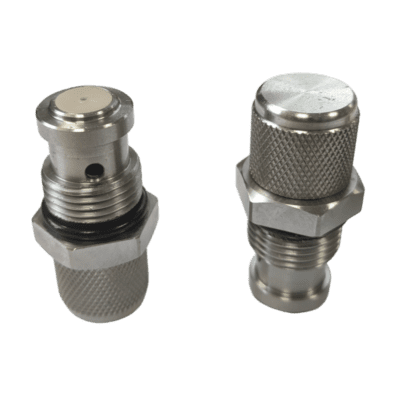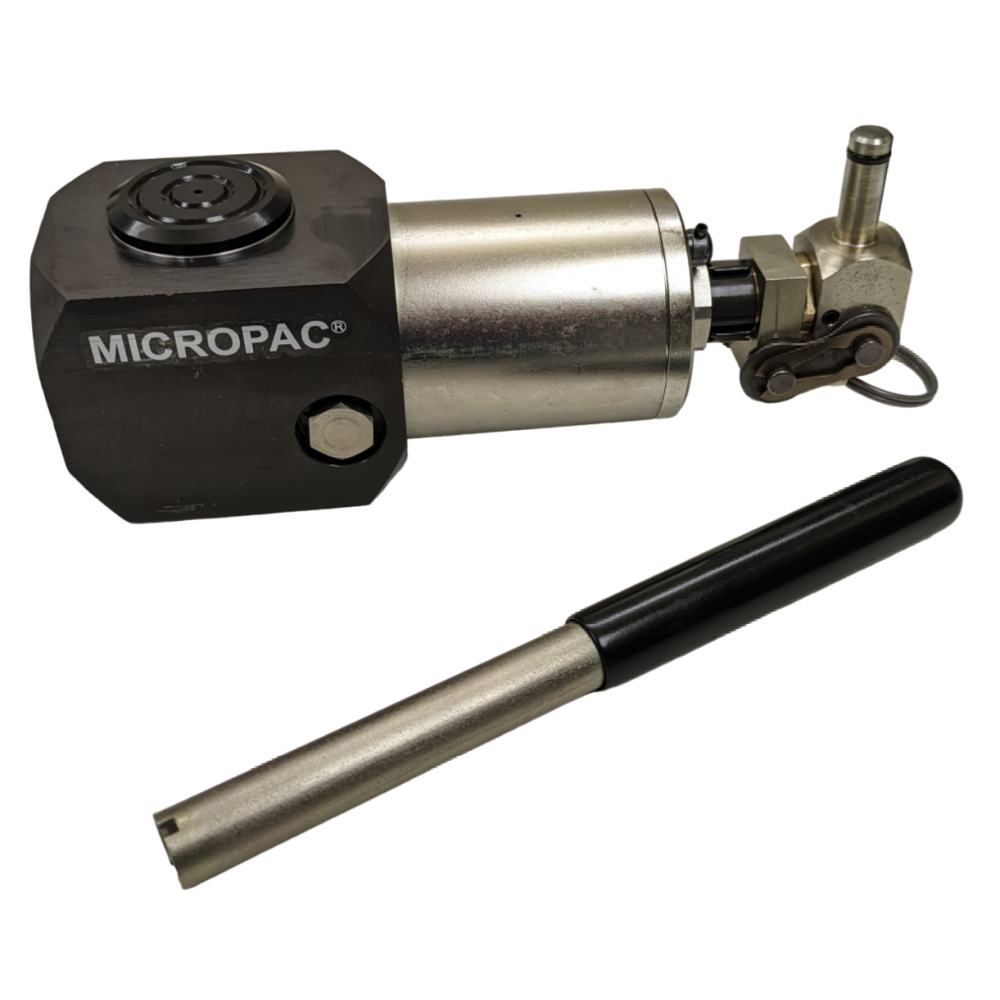Do I need a relief valve on my hydrostatic pressure test pump?
A relief valve limits the maximum pressure that can be generated. If you want to know how a basic direct acting relief valve works, our video shows one cracking and reseating. At a certain pressure, the hydraulic pressure over an orifice area will equal a spring load and a valve will open or “crack.” Some of the pressure vents away to tank or to atmospheric pressure, the valve closes and reseals.
On a hydrostatic pressure test pump like the Micropac PSP in our web shop, the relief valve limits the amount of pressure that the pump can generate and is upstream of the pump outlet check valve. If you need a relief valve that is downstream of the pump outlet check valve and protecting the circuit from over pressurisation (as might happen if the fluid heats up a lot), you need a unit that reseats quite close to the cracking pressure and is leakproof. Otherwise, the system pressure will simply leak away because the valve has not re-seated properly. This type of leakproof valve is quite specialist and relatively large. Always be careful of system relief valves on water and thin fluids. They need very clean hydraulic fluid. Dirt will cause them to leak. A “last chance” strainer is always sensible but invariably the data sheet requires cleanliness in excess of what is provided by a system without higher pressure filtration. Beware!
One very important point is whether a relief valve is certified as a “safety accessory” under the European PED. These larger relief valves that are used to protect a circuit are certified. Buy the right type. If the valve had a defect and jammed shut, a component like a pressure vessel could burst. Note that the millions of low cost relief valves manufactured each year for air receivers are invariably certified, as they are very much a “safety accessory.” People often just swap them out regularly or if in doubt.
Our relief valve on the PSP is a miniature cartridge type, allowing you to swap between settings in seconds or add a relief valve to you pump in place of the cavity blanking plug. That is very neat and easy. We have used this design for over 40 years.
So, do I need a relief valve or not? If you definitely don’t want a system over pressurised, then fit one. If the system being tested is fairly low pressure relative to the maximum pressure of the pump, then we would say yes. Our valves are adjustable using a socket set screw under a dust cap. A tamperproof option is available.
Can I use a commercial oil cartridge relief valve for my water pressure test or hydraulic system? We would say no. The tow relief valves are very different animals. Other than the oil unit being carbon steel, the commercial oil hydraulic types are invariably a ground poppet design that won’t really be very happy on very low viscosity water. Anyway, that’s what we would say in answer to this question. If we wanted a water relief valve, we would talk to BIS valves or use a Swagelok unit.
Talk to Pump Shop Pro if you need any advice on fitting a relief valve to your PSP two speed hydrotest pressure testing pump.


Leave A Comment